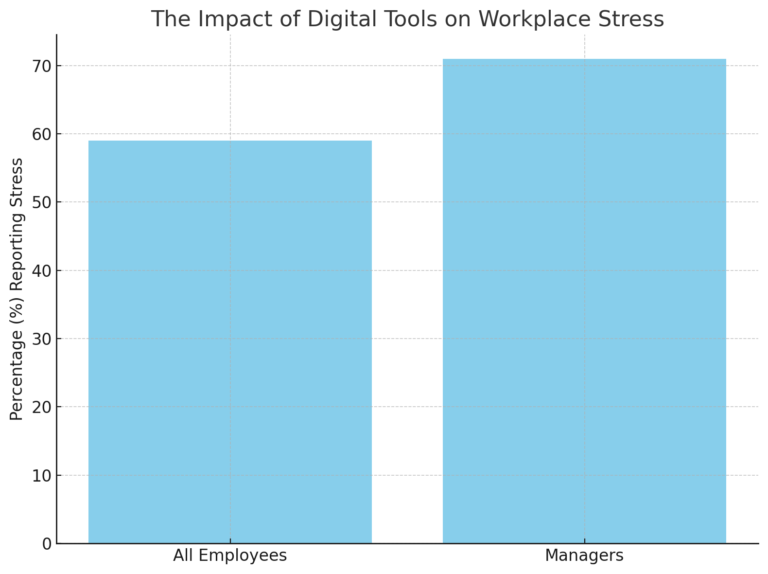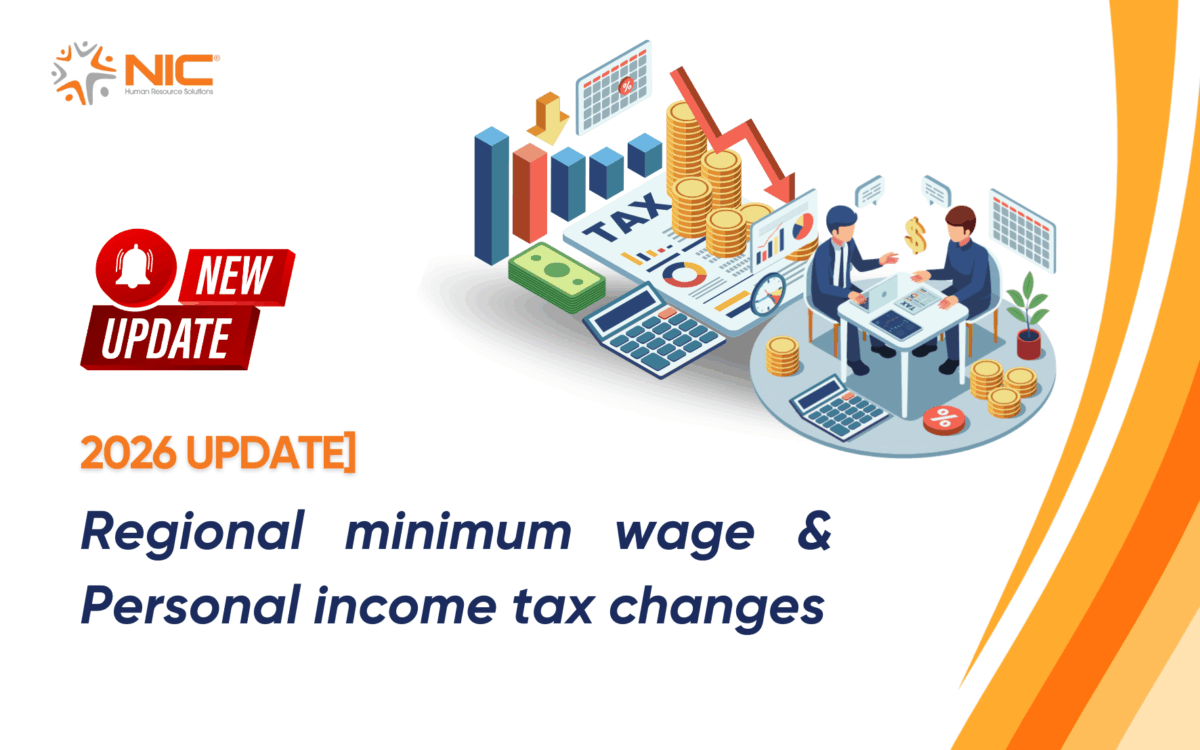Low Employee Engagement Costs Billions: How to Improve in 2025
19/9/2024
Employee engagement is more than just a nice-to-have. Gallup’s State of the Global Workplace report estimates that low employee engagement costs the global economy $8.9 trillion annually or about 9% of the global GDP. These financial losses are staggering, but the impact of disengagement goes beyond dollars. When employees feel disconnected, it creates a ripple effect across their productivity, job satisfaction, and overall well-being.

However, technology has introduced new complexities into the equation. On one hand, it has the potential to revolutionize employee engagement, but if not managed properly, it can contribute to stress and distraction. A recent article in Harvard Business Review frames it succinctly: “Technology and workplace tools are, for all intents and purposes, the new workplace.”
As we approach 2025, HR leaders must examine the evolving relationship between technology and employee engagement. Below, we explore some of the key insights from HR experts and how organizations can use these insights to enhance employee engagement.
Digital Noise and Workplace Stress
While digital tools are meant to streamline workflows and foster collaboration, they are increasingly becoming a source of stress for employees. According to a 2024 survey by Unily, 59% of employees said that digital tools contribute to workplace stress. The very platforms designed to improve efficiency are causing burnout for many workers.
This paradox presents a challenge for HR teams: how can they help employees manage digital noise without compromising the benefits of these tools?
Chris Ciauri, CEO of employee experience at Unily, notes that three-fourths of the survey respondents found workplace notifications distracting. At the same time, nearly the same number said that digital tools were crucial in helping them feel connected at work.
The key takeaway is that when digital tools overwhelm employees rather than help them, it’s time for HR teams to rethink their approach. Tools need to be integrated more effectively to reduce distractions while enhancing productivity.
Integration and Simplification of Tools
One of the most effective ways to reduce digital noise is through the integration and simplification of workplace tools. A unified tech stack can help employees prioritize tasks, reducing the number of platforms they have to manage. This is where AI comes in, enabling employees to filter through digital clutter and focus on what’s most important.
According to Unily’s research, 83% of employees believe that adopting a “super app”—one that consolidates multiple tools into a single interface—would make their work lives easier. This sentiment was shared across various employee groups, from managers to non-desk workers.
Here’s a visualization that summarizes the impact of digital noise on workplace stress:

The above chart demonstrates that managers, who are responsible for overseeing their teams’ workflows, are even more likely to feel overwhelmed by digital tools. For HR leaders, this signals the need to not only support the broader workforce but also protect managers from burnout.
Support for Managers
Interestingly, Unily’s survey found that managers experience more digital noise than their direct reports, with 71% of managers reporting that digital tools add to their stress levels. Managers play a crucial role in fostering engagement, but when they are overwhelmed, their ability to support their teams diminishes.
Ciauri explains that organizations need to protect their managers by carefully considering how to reduce the volume of digital noise. This can be achieved through tool consolidation, better training, and stronger support systems. Ensuring that managers are not constantly distracted by notifications will enable them to engage more meaningfully with their teams.
Human-Centered Technology
While technology is reshaping how we work, human interaction remains irreplaceable in maintaining a positive workplace culture. Tom Keuten, Senior Vice President at Rightpoint, notes that while employees need strong digital tools, they also crave human-to-human connections. These connections make employees feel like they are part of something larger than themselves.
Keuten predicts that as digital tools become more integral to daily work, the importance of human connection will only grow. HR leaders must balance technology and genuine interpersonal engagement, particularly as new generations enter the workforce.
The Role of AI in Employee Engagement
A growing trend in HR technology is the use of artificial intelligence (AI) to enhance employee experience. A 2024 study from RingCentral predicts that the next era of AI will focus on improving employee interactions and experiences. Over 60% of business leaders are currently using AI to improve engagement, but its success depends on thoughtful implementation.
Here’s a look at how organizations are leveraging AI:

The use of AI can significantly improve employee experiences by automating routine tasks, providing instant access to information, and offering real-time insights into employee sentiment. However, HR leaders must ensure that AI enhances, rather than replaces, human interactions.
Changing Employee Expectations in 2025
As technology evolves, so do employee expectations. A 2024 NSHSS survey of 10,000 high school students revealed that nearly 50% of Gen Z consider clear communication skills to be the most important quality in an employer. This shows that the next generation of workers values transparent and meaningful communication over technological tools alone.
Here’s a breakdown of what Gen Z workers prioritize in their workplace experience:

Organizations that invest in communication and support human connections will have a competitive edge in attracting the next generation of talent.
Data-Driven Engagement
Another major trend for 2025 is using data analytics to improve employee engagement. Modern HR platforms have AI-powered tools that collect and analyze employee feedback. By studying metrics like performance and satisfaction, organizations can identify areas for improvement and take proactive measures to address issues before they escalate.
Rightpoint’s Jesse Murray emphasizes that while employees are used to having tools available, disconnected tools can create confusion, leading to disengagement. A well-integrated tech stack that aligns with employee needs and provides real-time insights into performance will play a crucial role in enhancing engagement moving forward.
Employee Engagement: Balancing Technology with Human Connection
The challenge for HR leaders in 2025 will be to balance tech-driven engagement with human connection. Technology can streamline tasks and provide valuable insights, but it can’t replace the value of empathy, leadership, and genuine human interaction. As more organizations adopt advanced HR technologies, maintaining this balance will be critical for long-term engagement success.
In conclusion, as we move toward 2025, it’s clear that employee engagement must remain a top priority for organizations. The cost of disengaged employees, both financially and emotionally, is far too high to ignore. HR leaders can take action by investing in the right technologies, supporting managers, and fostering human connections in the workplace.
At NIC Global, we believe in creating a balanced employee experience that leverages technology while preserving the human element. By listening to employees, supporting their needs, and staying ahead of workplace trends, we can help businesses thrive in the face of new challenges.
For contact and support:
Facebook: NIC Global – Human Resource Solutions
Linkedin: NIC Global Sourcing JSC
Website: www.nicvn.com
Email: info@nicvn.com
Hotline: 0981.23.43.76
Address:
- Hanoi Office: No. 3A Thi Sach, Pham Dinh Ho Ward, Hai Ba Trung District, Hanoi, Vietnam
- Ho Chi Minh City Office: Dakao Center Building, 35 Mac Dinh Chi, District 1, Ho Chi Minh City, Vietnam
See more:
Payroll service
Staffing service
EOR service





